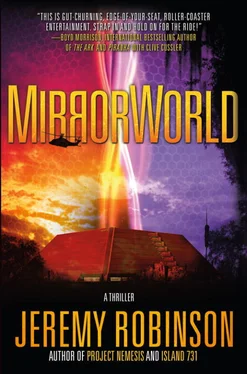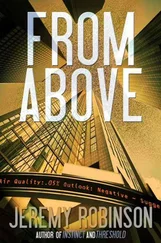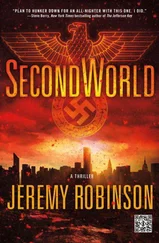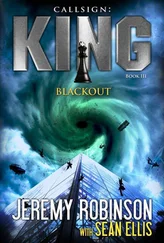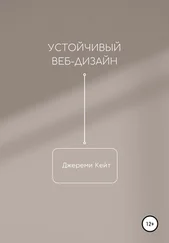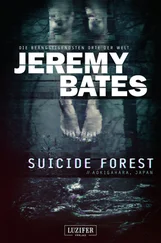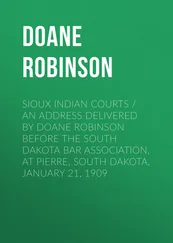“So, these things,” Cobb says. “The Dread. They’re in another dimension. I get that, but how are they able to move between them?” He points at me. “How is he? Is it like an Einstein-Rosen bridge to parallel worlds kind of a thing?”
Several surprised gazes turn to Cobb.
“ Doctor Who ?” Lyons asks, a trace of impatience lining his voice.
Cobb just grins.
“It’s nothing so grand,” Lyons answers. “And it’s not really a parallel world. They live on the same planet Earth as we do. They’re just… immaterial to us, to our perceptions, like high and low frequencies our ears can’t detect, or wavelengths of light our eyes can’t see. Humanity, and most of our animal counterparts, are capable of detecting and interacting with a limited number of string frequencies. The frequency, or dimension, the Dread inhabit is just beyond our sensory reach. Do you know anything about string theory?” Lyons points at me and speaks to Cobb. “Him, not you. Maybe a documentary while sitting on the SafeHaven couch?”
“Not that I can remember,” I say.
He continues. “String theory proposes that the universe is composed of miniscule vibrating strings of energy.”
I glance at Allenby. “So I’ve been told. Like musical notes.”
He seems to not hear me. “It’s a mathematical theory of everything that attempts to explain how the universe is bound together, including the vast amount of energy that must exist but is unobservable. According to string theory, the world as we know it is just a small part of something larger and unseen. Unexperienced. Traditional string theory reveals there are at least six more spatial dimensions that are hidden from us, on Earth and throughout the universe, though I believe there are more, where the frequencies overlap.”
“B flat,” I say, getting Lyons’s attention. “I call it the world in-between.”
“Exactly,” he says, his eyes moving from me to Allenby. “You told him more than we agreed.”
Allenby raises her eyebrows in defiance, up to the challenge. “That was before we were facing a bull and you sent him off after it.”
Before the conversation gets off track, and I stop getting my answers, I pull it back on course. “So no one has actually seen these dimensions? Not even with computers?”
“There are computer models, and at Neuro we’ve developed methods of detecting the Dread, but when it comes to the larger world they inhabit, we’re still trying to interpret the data in a way that our senses can understand. Based on our limited data, we believe they inhabit a mirror dimension of reality. String theory predicts the existence of pocket dimensions, which would be imperceptibly small, but contain bits of reality beyond our perception. As it turns out, the theory is only partly right. Pocket dimensions exist, but they’re a match for our own, a reflection of our reality. Not a perfect reflection, mind you, but a physical one, meaning the physical laws governing the mirror dimension, time, gravity, mass, etcetera, match the laws of our reality. The rest of it, like life, evolved in its own unique way.”
“But you really don’t know any of this for sure, do you?” I lean up a little to better look Lyons in the eyes. “Everything you think you know is based on what, mathematical models and computer simulations? Even Michael Crichton didn’t believe things like that qualified as scientific evidence.”
“You remember Crichton?” Allenby asked. She’s a little surprised.
“I did a lot of reading over the past year,” I say, and then decipher the true meaning of her question. “Wait, I met Crichton?”
“At Caltech. January 2003.” She smiles. “You were always a fan, but on that day he gave a lecture called ‘Aliens Cause Global Warming’ and warned about using computer models to make scientific predictions.”
“You were there, too?” I ask.
“And Maya.” She smiles. “It was a good day, despite the long cross-campus line.”
Lyons clears his throat. “Josef’s past is hardly relevant to our current situation, and in response to your query about mathematical predictions of the mirror dimension, you are correct. They’re educated guesses, at best. To really observe and interact with the other world in a way that allows us to make real measurements and observations, we have to alter our physical state. We have to become capable of interacting with all frequencies of reality.”
“We would have to become like the Dread,” I say.
Lyons stares at me, curious. “Precisely.”
His confirmation hangs in the air for a moment, until the implications of what he’s said sinks in.
“Is that what you did to me?”
“It’s what you did to you,” Lyons says, “when you decided to inject the—”
“But that was the plan all along, right? Turn me into one of them?”
“Not one of them,” Allenby says. “We need people like you to fight them. And we needed you to still be human.”
“So who else but me could?” I ask. “That’s your justification.”
“Once again,” Lyons says. “It was you who decided to—”
“You brought me here under false pretenses,” I say. “Created a scenario that you knew would end the way it did. You didn’t put the needle in my leg, but you convinced me it was the only course of action I had left. There isn’t much difference. All because I’m the only guy who can fight these things.”
Katzman takes a step forward like a recruit volunteering for duty. “Dread Squad can fight them. It’s not impossible. Fear can be overcome, through training—”
“I’ve seen how well that works.”
Winters speaks up for the first time since I embarrassed her. “ And drugs that temporarily block the amygdala’s function.”
“Drugs?” The question comes from Cobb.
Winters rolls her neck, cracking the tension from it. She’s got an edge, and is undeniably beautiful, almost sculpted. I can see what I liked about her, physically at least. We haven’t exactly hit if off yet, but that’s my fault. “BDO. It’s a mix of benzodiazepine, dextroamphetamine, and OxyContin.”
“Geez.” Cobb laughs a little “Sounds addictive as hell.”
“It is,” Winters concedes. “But the Oxy inhibits the amygdala.”
“And the rest?” I ask.
“Makes you feel like Superman,” Katzman says. “The cravings for more after a single hit can take months to go away, so it’s a last resort.”
Katzman has clearly tried the stuff. The thirsty look in his eyes as he speaks reveals the truth: the craving for more never goes away. Good thing I don’t need it. Of course, I’m now part monster from a hidden dimension. A drug addiction might be preferable. I doubt the genetic changes made to my body can be undone.
Speaking of which. “If you can’t really see or interact with the Dread, how did you change me?”
“The process of genetically altering a human being is actually quite simple. Dread cells are broken down though a process called sonication. We add a detergent to remove the membrane lipids, remove the proteins by adding a protase, then the RNA. We purify the remaining DNA, isolate the genes with traits we want to pass on and—”
I wave my hand around in circles. “Fast-forwarding…”
“Transgenesis, the process of taking genes from one organism and injecting them into another, was accomplished using a gene gun.”
“That sounds horrible,” Cobb says.
Lyons waves him off. “The DNA is combined with a genetically altered retrovirus that causes no outward symptoms but modifies the host’s DNA with the new code.”
“But that’s not what Crazy used on himself,” Cobb says. “That was an ordinary syringe. And how could DNA injected days ago already be changing his body? That would require—”
Читать дальше
